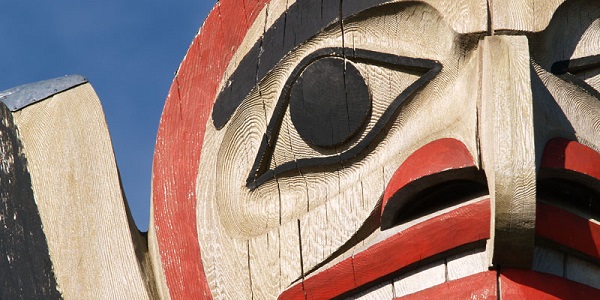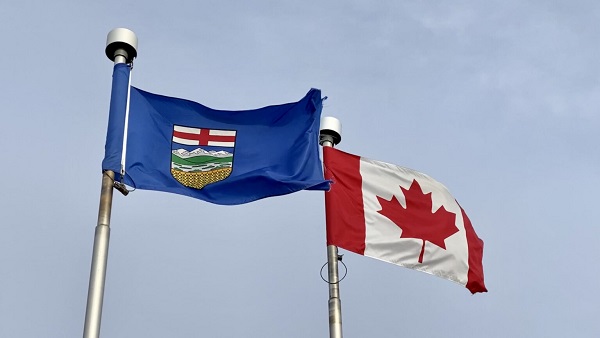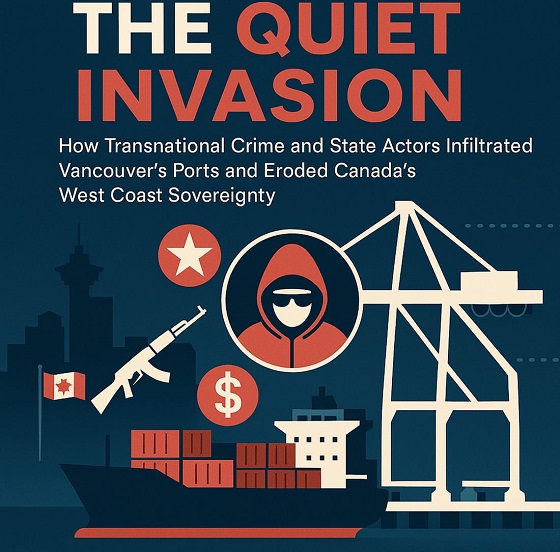Business
Ottawa’s avalanche of spending hasn’t helped First Nations

From the Fraser Institute
By Tom Flanagan
When Justin Trudeau came to power in 2015, he memorably said that the welfare of Indigenous Canadians was his highest priority. He certainly has delivered on his promise, at least in terms of shovelling out money.
During his 10 years in office, budgeted Indigenous spending has approximately tripled, from about $11 billion to almost $33 billion. Prime Minister Trudeau’s instruction to the Department of Justice to negotiate rather than litigate class actions has resulted in paying tens of billions of dollars to Indigenous claimants over alleged wrongs in education and other social services. And his government has settled specific claims—alleged violations of treaty terms or of the Indian Act—at four times the previous rate, resulting in the award of at least an additional $10 billion to First Nations government.
But has this avalanche of money really helped First Nations people living on reserves, who are the poorest segment of Canadian society?
One indicator suggests the answer is yes. The gap between reserves and other communities—as measured by the Community Well-Being Index (CWB), a composite of income, employment, housing and education—fell from 19 to 16 points from 2016 to 2021. But closer analysis shows that the reduction in the gap, although real, cannot be due to the additional spending described above.
The gain in First Nations CWB is due mainly to an increase in the income component of the CWB. But almost all of the federal spending on First Nations, class-action settlements and specific claims do not provide taxable income to First Nations people. Rather, the increase in income documented by the CWB comes from the greatly increased payments legislated by the Liberals in the form of the Canada Child Benefit (CCB). First Nations people have a higher birth rate than other Canadians, so they have more children and receive more (on average) from the Canada Child Benefit. Also, they have lower income on average than other Canadians, so the value of the CCB is higher than comparable non-Indigenous families. The result? A gain in income relative to other Canadians, and thus a narrowing of the CWB gap between First Nations and other communities.
There’s an important lesson here. Tens of billions in additional budgetary spending and legal settlements did not move the needle. What did lead to a measurable improvement was legislation creating financial benefits for all eligible Canadian families with children regardless of race. Racially inspired policies are terrible for many reasons, especially because they rarely achieve their goals in practise. If we want to improve life for First Nations people, we should increase opportunities for Canadians of all racial backgrounds and not enact racially targeted policies.
Moreover, racial policies are also fraught with unintended consequences. In this case, the flood of federal money has made First Nations more dependent rather than less dependent on government. In fact, from 2018 to 2022, “Own Source Revenue” (business earnings plus property taxes and fees) among First Nations bands increased—but not as much as transfers from government. The result? Greater dependency on government transfers.
This finding is not just a statistical oddity. Previous research has shown that First Nations who are relatively less dependent on government transfers tend to achieve higher living standards (again, as measured by the CWB index). Thus, the increase in dependency presided over by the Trudeau government does not augur well for the future.
One qualification: this finding is not as robust as I would like because the number of band governments filing reports on their finances has drastically declined. Of 630 First Nation governments, only 260 filed audited statements for fiscal 2022. All First Nations are theoretically obliged by the First Nations Financial Transparency Act, 2013, to publish such statements, but the Trudeau government announced there would be no penalties for non-compliance, leading to a precipitous decline in reporting.
This is a shame, because First Nations, as they often insist, are governments, not private organizations. And like other governments, they should make their affairs visible to the public. Also, most of their income comes from Canadian taxpayers. Both band members and other Canadians have a right to know how much money they receive, how it’s being spent and whether it’s achieving its intended goals.
Author:
Business
RFK Jr. says Hep B vaccine is linked to 1,135% higher autism rate

From LifeSiteNews
By Matt Lamb
They got rid of all the older children essentially and just had younger children who were too young to be diagnosed and they stratified that, stratified the data
The Centers for Disease Control and Prevention (CDC) found newborn babies who received the Hepatitis B vaccine had 1,135-percent higher autism rates than those who did not or received it later in life, Robert F. Kennedy Jr. told Tucker Carlson recently. However, the CDC practiced “trickery” in its studies on autism so as not to implicate vaccines, Kennedy said.
RFK Jr., who is the current Secretary of Health and Human Services, said the CDC buried the results by manipulating the data. Kennedy has pledged to find the causes of autism, with a particular focus on the role vaccines may play in the rise in rates in the past decades.
The Hepatitis B shot is required by nearly every state in the U.S. for children to attend school, day care, or both. The CDC recommends the jab for all babies at birth, regardless of whether their mother has Hep B, which is easily diagnosable and commonly spread through sexual activity, piercings, and tattoos.
“They kept the study secret and then they manipulated it through five different iterations to try to bury the link and we know how they did it – they got rid of all the older children essentially and just had younger children who were too young to be diagnosed and they stratified that, stratified the data,” Kennedy told Carlson for an episode of the commentator’s podcast. “And they did a lot of other tricks and all of those studies were the subject of those kind of that kind of trickery.”
But now, Kennedy said, the CDC will be conducting real and honest scientific research that follows the highest standards of evidence.
“We’re going to do real science,” Kennedy said. “We’re going to make the databases public for the first time.”
He said the CDC will be compiling records from variety of sources to allow researchers to do better studies on vaccines.
“We’re going to make this data available for independent scientists so everybody can look at it,” the HHS secretary said.
— Matt Lamb (@MattLamb22) July 1, 2025
Health and Human Services also said it has put out grant requests for scientists who want to study the issue further.
Kennedy reiterated that by September there will be some initial insights and further information will come within the next six months.
Carlson asked if the answers would “differ from status quo kind of thinking.”
“I think they will,” Kennedy said. He continued on to say that people “need to stop trusting the experts.”
“We were told at the beginning of COVID ‘don’t look at any data yourself, don’t do any investigation yourself, just trust the experts,”‘ he said.
In a democracy, Kennedy said, we have the “obligation” to “do our own research.”
“That’s the way it should be done,” Kennedy said.
He also reiterated that HHS will return to “gold standard science” and publish the results so everyone can review them.
Business
Elon Musk slams Trump’s ‘Big Beautiful Bill,’ calls for new political party

From LifeSiteNews
By Robert Jones
The Tesla CEO warned that Trump’s $5 trillion plan erases DOGE’s cost-cutting gains, while threatening to unseat lawmakers who vote for it.
Elon Musk has reignited his feud with President Donald Trump by denouncing his “Big Beautiful Bill” in a string of social media posts, warning that it would add $5 trillion to the national debt.
“I’m sorry, but I just can’t stand it anymore. This massive, outrageous, pork-filled Congressional spending bill is a disgusting abomination. Shame on those who voted for it: you know you did wrong. You know it,” Musk exclaimed in an X post last month.
I’m sorry, but I just can’t stand it anymore.
This massive, outrageous, pork-filled Congressional spending bill is a disgusting abomination.
Shame on those who voted for it: you know you did wrong. You know it.
— Elon Musk (@elonmusk) June 3, 2025
Musk renewed his criticism Monday after weeks of public silence, shaming lawmakers who support it while vowing to unseat Republicans who vote for it.
“They’ll lose their primary next year if it is the last thing I do on this Earth,” he posted on X, while adding that they “should hang their heads in shame.”
Every member of Congress who campaigned on reducing government spending and then immediately voted for the biggest debt increase in history should hang their head in shame!
And they will lose their primary next year if it is the last thing I do on this Earth.
— Elon Musk (@elonmusk) June 30, 2025
The Tesla and SpaceX CEO also threatened to publish images branding those lawmakers as “liars.”
Trump responded on Truth Social by accusing Musk of hypocrisy. “He may get more subsidy than any human being in history,” the president wrote. “Without subsidies, Elon would probably have to close up shop and head back home to South Africa… BIG MONEY TO BE SAVED!!!”
( @realDonaldTrump – Truth Social Post )
( Donald J. Trump – Jul 01, 2025, 12:44 AM ET )Elon Musk knew, long before he so strongly Endorsed me for President, that I was strongly against the EV Mandate. It is ridiculous, and was always a major part of my campaign. Electric cars… pic.twitter.com/VPadoTBoEt
— Donald J. Trump 🇺🇸 TRUTH POSTS (@TruthTrumpPosts) July 1, 2025
Musk responded by saying that even subsidies to his own companies should be cut.
Before and after the 2024 presidential election, Musk spoke out about government subsidies, including ones for electric vehicles, stating that Tesla would benefit if they were eliminated.
This latest exchange marks a new escalation in the long-running and often unpredictable relationship between the two figures. Musk contributed more than $250 million to Trump’s reelection campaign and was later appointed to lead the Department of Government Efficiency (DOGE), which oversaw the termination of more than 120,000 federal employees.
Musk has argued that Trump’s new bill wipes out DOGE’s savings and reveals a deeper structural problem. “We live in a one-party country – the PORKY PIG PARTY!!” he wrote, arguing that the legislation should be knows as the “DEBT SLAVERY bill” before calling for a new political party “that actually cares about the people.”
It is obvious with the insane spending of this bill, which increases the debt ceiling by a record FIVE TRILLION DOLLARS that we live in a one-party country – the PORKY PIG PARTY!!
Time for a new political party that actually cares about the people.
— Elon Musk (@elonmusk) June 30, 2025
In June, Musk deleted several inflammatory posts about the president, including one claiming that Trump was implicated in the Jeffrey Epstein files. He later acknowledged some of his comments “went too far.” Trump, in response, said the apology was “very nice.”
With the bill still under Senate review, the dispute underscores growing pressure on Trump from fiscal hardliners and tech-aligned conservatives – some of whom helped deliver his return to power. Cracks in the coalition may spell longer term problems for the Make America Great Again movement.
-

 Business10 hours ago
Business10 hours agoRFK Jr. says Hep B vaccine is linked to 1,135% higher autism rate
-

 Alberta2 days ago
Alberta2 days agoAlberta Independence Seekers Take First Step: Citizen Initiative Application Approved, Notice of Initiative Petition Issued
-

 Crime22 hours ago
Crime22 hours agoNational Health Care Fraud Takedown Results in 324 Defendants Charged in Connection with Over $14.6 Billion in Alleged Fraud
-

 Crime2 days ago
Crime2 days agoSuspected ambush leaves two firefighters dead in Idaho
-

 Alberta2 days ago
Alberta2 days agoWhy the West’s separatists could be just as big a threat as Quebec’s
-

 Business2 days ago
Business2 days agoCanada Caves: Carney ditches digital services tax after criticism from Trump
-

 Health22 hours ago
Health22 hours agoRFK Jr. Unloads Disturbing Vaccine Secrets on Tucker—And Surprises Everyone on Trump
-

 Business2 days ago
Business2 days agoMassive government child-care plan wreaking havoc across Ontario


